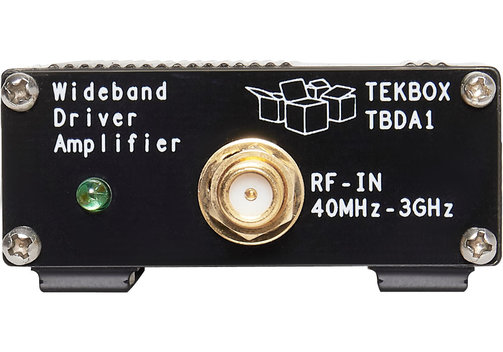Wideband amplifiers play a crucial role in modern electronic systems, enabling the amplification of signals across a broad frequency range. Whether in communication systems, radar applications, or test and measurement equipment, wideband amplifiers are essential for maintaining signal integrity and fidelity. This comprehensive guide aims to provide an in-depth understanding of wideband amplifiers, covering their principles, types, applications, and key considerations.
I. Principles of Wideband Amplifiers:
Wideband amplifiers are designed to amplify signals with frequencies spanning a wide range. Unlike narrowband amplifiers, which are optimized for a specific frequency range, wideband amplifiers must be capable of maintaining performance across a broad spectrum. The following are fundamental principles associated with wideband amplifiers:
- Bandwidth: The bandwidth of a wideband amplifier refers to the frequency range over which it can effectively amplify signals. It is a critical parameter that determines the amplifier’s ability to handle various frequencies without significant degradation.
- Gain: Gain is the amplification factor of an amplifier and is usually expressed in decibels (dB). Wideband amplifiers need to provide consistent gain across their specified bandwidth to ensure uniform amplification of signals.
- Noise Figure: Noise figure quantifies the amount of noise introduced by the amplifier. In wideband applications, maintaining a low noise figure is crucial for preserving signal quality, especially in sensitive communication systems.
II. Types of Wideband Amplifiers:
Wideband amplifiers come in various types, each suited for specific applications. Common types include:
- Broadband Amplifiers: These amplifiers cover a wide frequency range and are often used in applications where signal fidelity is critical, such as in high-frequency test and measurement equipment.
- RF (Radio Frequency) Amplifiers: RF amplifiers focus on amplifying signals within the radio frequency spectrum. They find applications in communication systems, radar, and wireless technologies.
- IF (Intermediate Frequency) Amplifiers: IF amplifiers operate at intermediate frequencies, commonly used in superheterodyne receivers. They play a crucial role in down-converting RF signals for further processing.
III. Applications of Wideband Amplifiers:
Wideband amplifiers are integral components in various electronic systems, serving diverse applications:
- Communication Systems: In wireless communication systems, wideband amplifiers are employed to amplify signals across different frequency bands, ensuring reliable transmission and reception.
- Radar Systems: Radar applications require amplifiers capable of handling a wide range of frequencies to detect and process signals accurately. Wideband amplifiers contribute to the sensitivity and resolution of radar systems.
- Test and Measurement Equipment: High-frequency test equipment, such as oscilloscopes and spectrum analyzers, rely on wideband amplifiers to maintain signal integrity during measurement and analysis.
IV. Key Considerations in Wideband Amplifier Design:
Designing effective wideband amplifiers involves addressing specific challenges to achieve optimal performance:
- Stability: Wideband amplifiers must be designed to ensure stability across their entire frequency range. Techniques such as feedback and compensation networks are employed to maintain stability.
- Linearity: Maintaining linearity is crucial for wideband amplifiers, especially in communication systems. Non-linearities can lead to signal distortion and affect the overall system performance.
- Power Consumption: Efficient power utilization is essential, particularly in portable and battery-powered devices. Designing wideband amplifiers with low power consumption contributes to energy efficiency.
Conclusion:
Wideband amplifiers are indispensable components in the realm of modern electronics, facilitating the amplification of signals across diverse frequency ranges. Understanding the principles, types, applications, and key considerations in wideband amplifier design is crucial for engineers and enthusiasts alike, ensuring the successful implementation of these amplifiers in various electronic systems. As technology continues to advance, the role of wideband amplifiers will only become more prominent in shaping the future of communication, radar, and high-frequency electronics.
